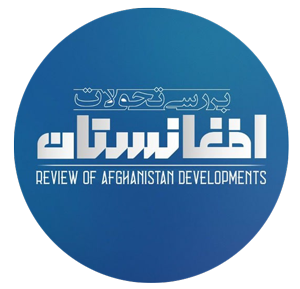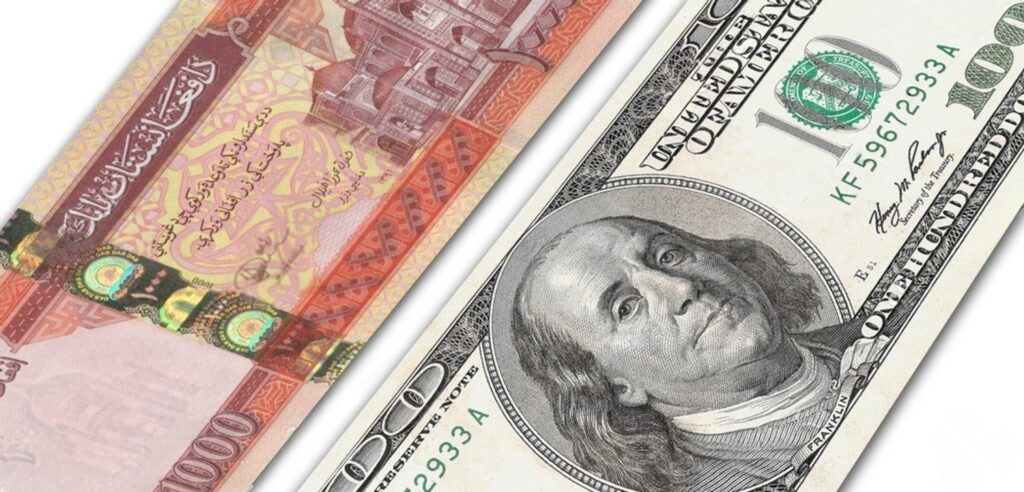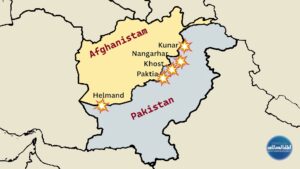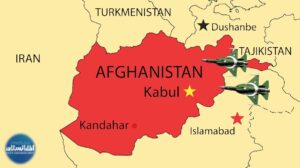Review of Afghanistan developments
The exchange rate serves as a crucial indicator within the economy of any nation, reflecting not only the condition of foreign trade and foreign exchange reserves but also exerting a direct influence on the daily lives of individuals. In Afghanistan, the reliance on the dollar and other foreign currencies has led to fluctuations in the exchange rate, particularly affecting the value of the Afghani against the dollar, which has become a significant factor in determining the purchasing power of households and the cost of essential goods. Following the Taliban’s return to power in 2021, it was anticipated that the collapse of governmental structures, the cessation of foreign aid to the budget, and the imposition of international sanctions would result in a drastic decline in the value of the Afghani; however, the Afghan national currency ultimately succeeded in maintaining its stability.
In recent months, the dollar’s value in relation to the Afghani has experienced a significant decline, decreasing from approximately 120 Afghanis during the initial months of the Taliban regime to about 67 Afghanis at present. This situation prompts several critical inquiries: How has the Taliban regime succeeded in stabilizing the Afghani’s value? Why has this stabilization not resulted in a notable decrease in the prices of essential goods and alleviation of poverty? Furthermore, what does the future hold for the exchange rate in Afghanistan?
Analyzing the Afghani value with a scientific approach
To thoroughly examine this issue, it is essential to consider not only the traditional theories of currency supply and demand but also the tools of fiscal and monetary policy. The currency supply and demand theory posits that the value of the Afghani in the open market is influenced by the balance between the supply and demand for foreign currency; an uptick in the demand for dollars leads to a depreciation of the Afghani, while a decline in demand results in its appreciation. Nevertheless, the stability of the nominal (numerical) exchange rate does not necessarily equate to the stability of the real exchange rate or real purchasing power, as fluctuations in the prices of goods and associated costs can undermine this stability.
In the realm of monetary policy, the central bank is able to maintain monetary stability through the establishment of interest rates, the regulation of banks’ legal reserves, and interventions in the foreign exchange market. Examples of these instruments include weekly foreign exchange auctions, managing the supply of dollars, and limiting capital outflows. Conversely, the government’s stringent regulations on the foreign exchange market, the enhancement of remittance inflows, the receipt and distribution of international aid, as well as the management or reduction of imports, directly influence the demand for foreign exchange and the stability of the Afghani’s value.
The concept of exchange rate pass-through indicates that fluctuations in exchange rates only partially influence the prices of imported goods, and this effect is not consistently complete or direct in real-world scenarios. In simpler terms, when the value of the Afghani fluctuates, it is anticipated that the prices of imported goods will adjust accordingly; however, various other factors may diminish or interfere with this pass-through.
For instance, consider a scenario where a bag of rice is priced at $10. If the value of the dollar in Afghanistan decreases from 120 Afghanis to 67 Afghanis, we would anticipate that the cost of a bag of rice would drop from 1200 Afghanis to approximately 670 Afghanis. However, in reality, due to inadequate market regulation, corruption within customs, or the monopolistic nature of imports, vendors may maintain prices significantly above this reasonable threshold; for instance, the cost of a bag of rice could rise to 1000 Afghanis, indicating that the reduction in the dollar’s value is not entirely mirrored in the pricing.
This illustrates the significance of this theory, as even though the Taliban government managed to stabilize the value of the Afghani in relation to the dollar, this stabilization did not automatically result in a reduction of prices in domestic markets, and its restricted impact is only observable within the macroeconomic context.
This illustrates the significance of this theory, as even though the Taliban government managed to stabilize the value of the Afghani in relation to the dollar, this stabilization did not automatically result in a reduction of prices in domestic markets, and its restricted impact is only observable within the macroeconomic context.
Factors contributing to the Taliban government’s maintenance the Afghani value
The Afghani value has been preserved due to a combination of several crucial factors. Firstly, stringent regulations on dollar transfers, especially limitations on capital outflows and the circulation of dollars, have managed to control the flow of foreign exchange within the domestic market and have mitigated excessive demand for dollars. Secondly, the central bank’s intervention, along with conducting weekly foreign exchange auctions by providing fixed amounts of dollars, has successfully averted abrupt fluctuations in the exchange rate.
Thirdly, the influx of humanitarian cash assistance from the United Nations and various international organizations, particularly in dollar form, has significantly contributed to bolstering foreign exchange reserves and alleviating market pressure. Fourthly, remittances sent by Afghan refugees residing in neighboring and Western nations serve as a crucial source of foreign exchange, aiding in the maintenance of market equilibrium. Lastly, the decrease in import demand resulting from the economic downturn, high unemployment rates, and diminished purchasing power among the populace has further eased the demand for dollars, thereby assisting in the stabilization of the Afghani’s value.
These actions, in conjunction with a blend of restricted yet focused monetary and fiscal strategies, have enabled the management of the Afghani’s value and the exchange rate, thereby averting a decline in the national currency’s worth and a potential currency crisis.
Favorable outcomes resulting from the stability of the Afghani’s value
The consistent stability of the exchange rate has yielded numerous beneficial effects for the Afghan economy. Firstly, it has averted a total economic collapse; had the dollar experienced a sudden surge, rampant inflation and a pervasive market crisis would have been unavoidable. Furthermore, the stability of the currency has fostered a sense of relative confidence in the market, enabling traders and money changers to carry out their transactions with increased assurance, thereby averting psychological crises.
The stability of the Afghani has diminished the motivation to dollarize the economy. In certain nations, like Zimbabwe in 2009, the failure of the national currency led to the exclusive use of dollars; however, in Afghanistan, the relative stability of the Afghani exchange rate has somewhat mitigated this trend. Furthermore, the stability of the currency has facilitated financial planning for both families and businesses, and has partially alleviated the impacts of global inflation.
Reasons for not lowering the prices of essential goods
One significant factor contributing to the stagnation of basic commodity prices is the reliance on imports and associated costs; Afghanistan imports nearly all essential goods, including flour, rice, oil, and fuel. Even with a stable dollar exchange rate, the expenses related to transportation and customs duties lead to price hikes. Furthermore, the monopolistic practices and hoarding behaviors of large traders hinder any potential price reductions. The market for essential commodities is dominated by a small number of major traders, who maintain elevated prices through informal agreements or the accumulation of goods.
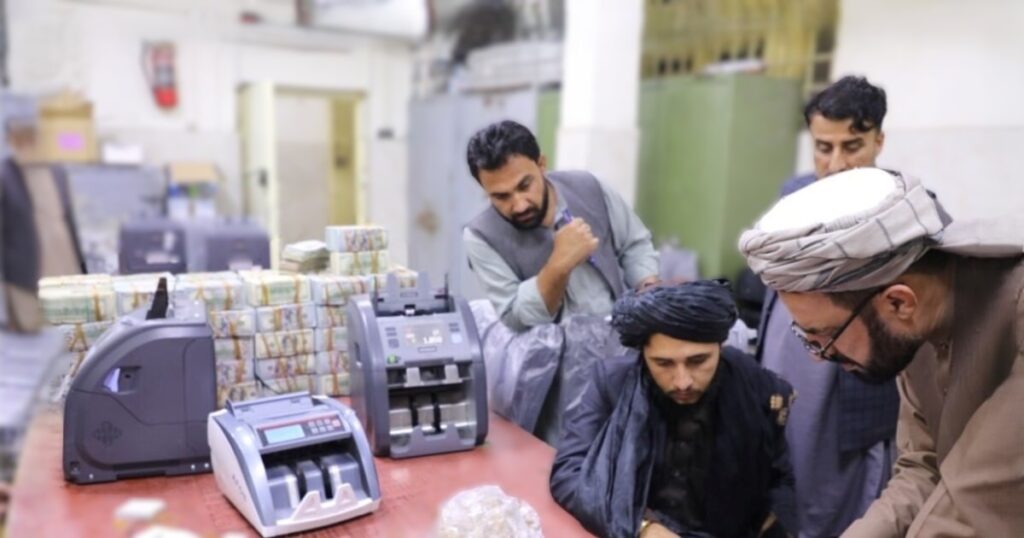
Insufficient government regulation of the market significantly contributes to the issue; the Taliban do not possess the necessary tools and framework to effectively manage and oversee pricing.
Furthermore, the worldwide inflation affecting raw materials and imported products directly influences the absence of a reduction in the prices of essential goods in Afghanistan. The rise in global prices for rice, wheat, and oil leads to an increase in the domestic prices of basic goods, even when the dollar exchange rate remains stable.
Structural poverty and the lack of stability in currency value
The overall stagnation of the Afghan national economy suggests that the current stability of the exchange rate is more of a temporary, unstable, and fragile condition. This stability primarily relies on foreign aid and remittances from migrants, rather than on the advancement of national production. The insufficient investment in domestic production and the scarcity of job opportunities have led to the continuation of structural poverty. While the stability of the Afghani’s value has managed to keep inflation in check, the prevalence of widespread unemployment, decreasing household incomes, and inadequate social services have contributed to the ongoing persistence of poverty.
Furthermore, the threat of a currency crisis remains ever-present. A cessation of financial aid from global organizations or a rise in sanctions could lead Afghanistan into a profound crisis, resulting in extensive social repercussions including diminished access to food, heightened poverty levels, and social unrest.
Future projections and the development of three scenarios regarding the Afghani value
The future of the Afghan currency and the exchange rate in Afghanistan is significantly influenced by the ongoing provision of international aid and the policies implemented by the Taliban government. In an optimistic scenario, sustained humanitarian aid and prudent management by the Central Bank of Afghanistan will help preserve relative stability in the exchange rate. In a more moderate scenario, a gradual decline in aid coupled with mounting pressure on foreign exchange reserves may lead to sporadic fluctuations within the foreign exchange market. Conversely, in a pessimistic scenario, a total halt to cash aid and a substantial outflow of capital could abruptly elevate the exchange rate, potentially driving the economy into a severe crisis akin to that experienced by Lebanon in 2020 or Venezuela in 2018.
The route to sustainable economic recovery and the alleviation of poverty lies in investing in domestic production, implementing trade reforms, enhancing market transparency, and generating genuine job opportunities. It is essential that fiscal and monetary policies are specifically aimed and synchronized to produce lasting impacts on exchange rate stability and the reduction of poverty.
Related Articles
The Economy of Afghanistan under Taliban governance
Agricultural economy in Afghanistan
Conclusion
The Taliban administration has succeeded in stabilizing the Afghani’s value against the dollar through a combination of limited yet stringent measures. This achievement is attributed more to government regulations, foreign cash inflows, and remittances from migrants than to any significant economic growth or structural reforms. Nevertheless, ensuring currency stability is not enough alone; due to weak domestic production, market monopolies, corruption, and global inflation, the prices of essential goods have not fallen, and poverty continues to be a pressing issue. The future trajectory of the exchange rate hinges on the implementation of economic reforms, the enhancement of domestic production capabilities, and the establishment of genuine job opportunities.
The Taliban administration needs to establish trust with international nations and encourage the flow of foreign investment into Afghanistan by implementing reforms in its domestic policies.
Follow us on social media
